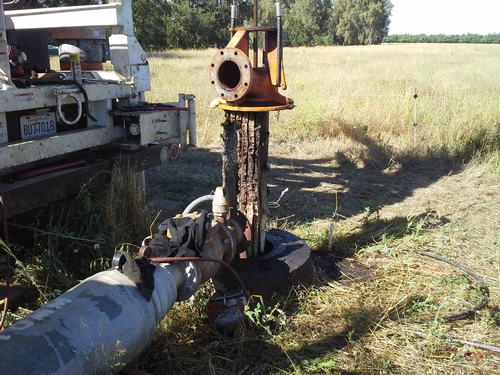Farming, the Original Risky Business
As we prepare to host another Beginning Farming Academy here at UCCE, we’ve been talking a lot about risk management. An economic concept, risk management is defined as the effect of uncertainty on objectives. In farming terms, I think of risk management this way: What are the vulnerable parts of my farm operation and what are my back-up plans in case of unforeseen events?
The risks of your farm enterprise will fall into five main categories:
Production – Example: A late frost knocks out your entire tomato planting.
Financial – You have to make payroll and your cash flow is not up to snuff.
Marketing – Your biggest account decides to buy from another producer.
Human - Your delivery driver doesn’t show up.
Legal – An employee files a Workers’ Compensation claim.
While you may never have to deal with these unforeseen situations, taking the time now (while the weather is clear and the bank account strong) to think through your risks and devise management plans, will save you time, money and heart ache.
Here are a few tips I’ve received along the way to insure my operation against the inherent risks of farming:
- Have access (aka pre-approval) to a line of credit (a credit card or loan) for as much money as your largest potential expense. Examples include replacing an irrigation pump, purchasing feed for livestock, making payroll, or replacing/repairing a delivery vehicle. Don’t use the credit unless it is an emergency. It reflects well on your business to have access to credit that you do not use. If you do use this emergency line of credit, have a repayment plan devised in advance. Recognize the red flag of using this borrowed money- What went wrong with the cashflow and how can it be fixed?
- Don’t short yourself on insurance. Yes, I know – it seems like just another, excessive administrative cost, but it is a critical part in protecting your farm equity, maintaining landowner relations (and therefor land tenure) and protecting the assets of your entire family. Ask around to see who is insuring other farmers in your area and then compare quotes from different providers. Remember, your insurance needs to cover the assets of anyone remotely associated with the farm business including family members (most notably your parents) and landowners. It is worth paying the premium for adequate insurance than facing the calamitous situation of not having enough coverage for a claim filed against you.
- Buy health insurance and require that all farm employees have health insurance. With recent reforms to health care legislation, health care is more affordable and more accessible than ever. It is incredibly important that all people on the farm have, at the very least, emergency health benefit coverage. Check out https://www.coveredca.com/ to see what may be available to you and your employees.
- Make a habit of inspecting your farm vehicles (including tractors), especially those that you rely on for delivery. Check tires, air pressure, oil, transmission and power steering fluid regularly. Deal with regular maintenance repairs now to avoid the catastrophic repairs (and potential accidents) that can occur due to vehicle neglect. Always have a spare tire, jack, first aid kit, oil, water, and basic tools in all of your vehicles.
- Have a clear and thorough emergency response plan. All of your employees (and anyone else on your farm, for that matter) need to know how to respond when someone is injured. This includes how to contact EMS (in rural areas it is much better to call 911 from a landline than a cell phone), how to direct EMS to your location (what is the street address of that piece of land you lease from your neighbor?), and how to get to the Emergency Room. I suggest you create a sheet of instructions and directions, laminate it, and place it in every vehicle on the farm and in every building on the farm. Where are your fire extinguishers? What about first aid kits? What is the plan for wildfire on the farm? Make a plan and make sure everyone knows the plan. To prevent injury and emergencies, make safe-farming practices a habit: use caution in extreme weather, have cold drinking water available at all times, recognize exhaustion and take breaks when necessary, teach safe tool and machine handling.
- Have a list of friends, family and neighbors who know the basics of your operation and can be called on at a moment’s notice to help out. Create a basic Operations Manual to house in your farm office that can serve as a reference guide to help run the farm in your absence. Include protocol for all aspects of your farm operation, particularly those that are integral to your business (contacts for big customer accounts, how to use electric fencing, how to irrigate the greenhouse, etc.)
Once you start thinking about your operation and potential back-up plans, the vulnerable aspects of your business will be clear. The good news: You’ve identified the problems, which is the first step in solving them. We’ve got a lot more information on Risk Management on our website: http://ucanr.edu/sites/placernevadasmallfarms/Resources/Risk_Management/. Take a look and see if there are a couple things you can think about or implement today to make your farm operation more resilient.


